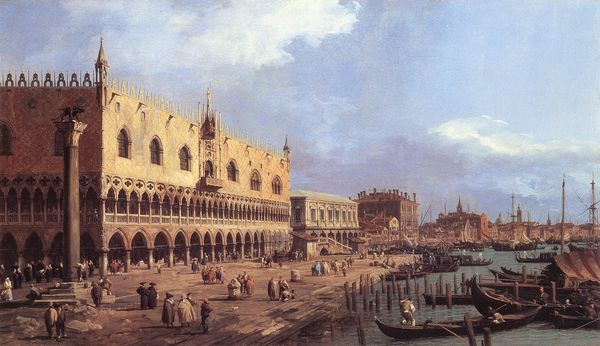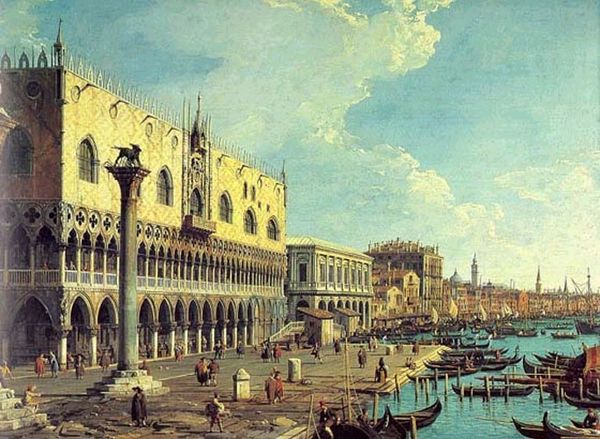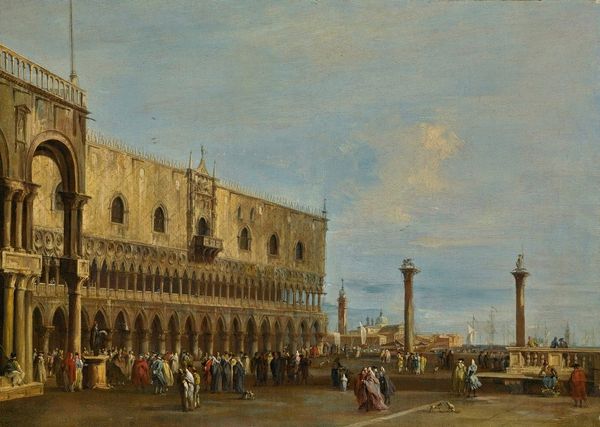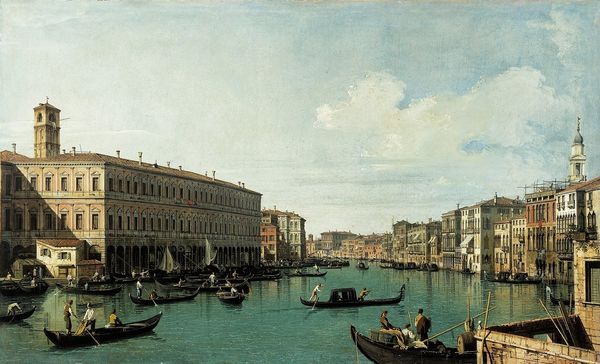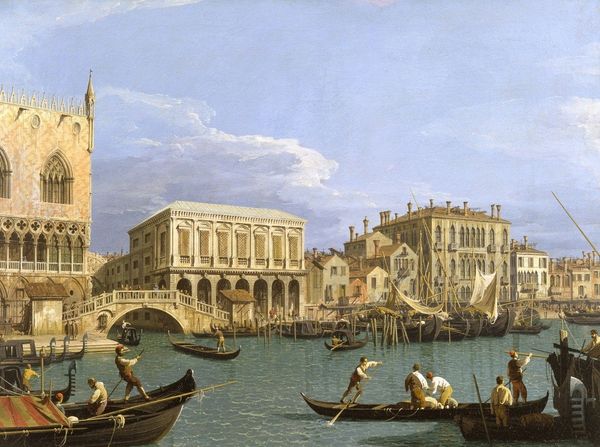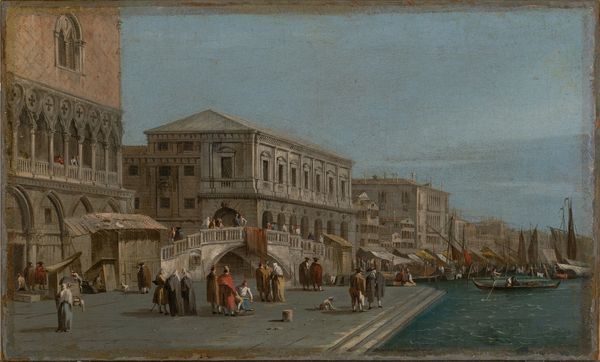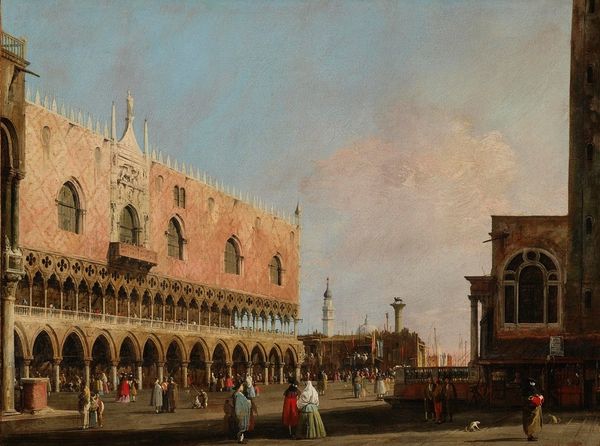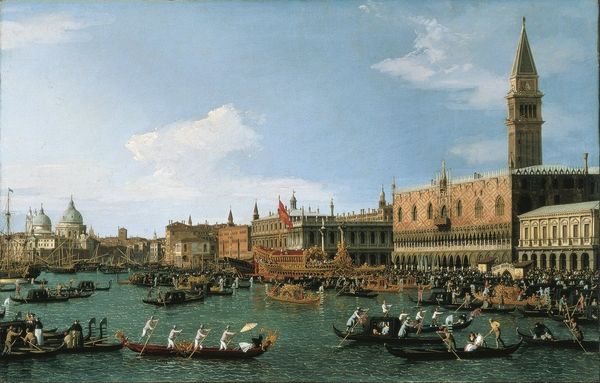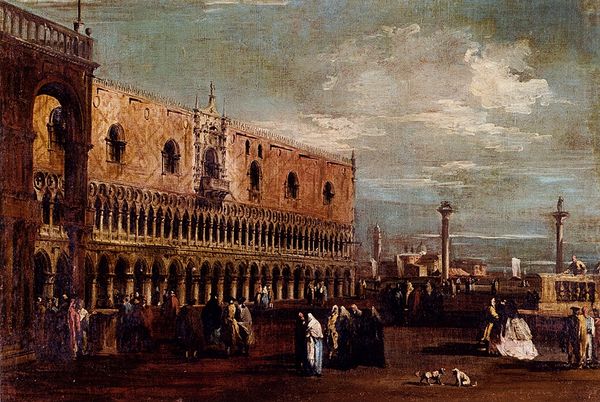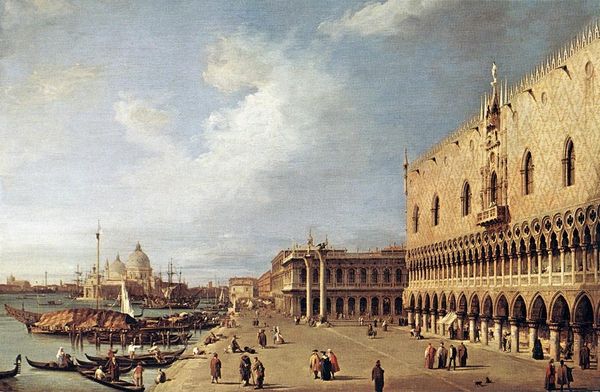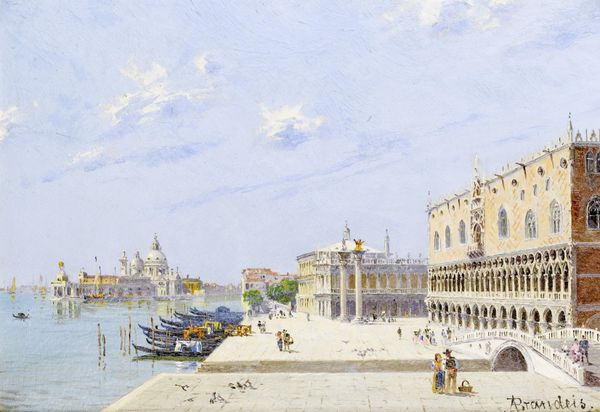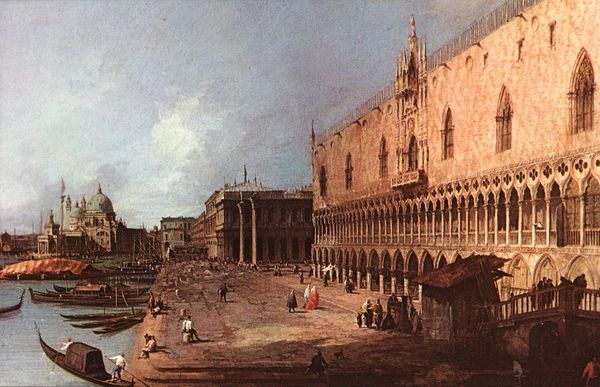
painting, oil-paint
#
portrait
#
venetian-painting
#
baroque
#
painting
#
oil-paint
#
landscape
#
oil painting
#
cityscape
Copyright: Public Domain: Artvee
Curator: Looking at this painting, “Venice, the Riva degli Schiavoni,” painted by Canaletto around 1740-1745, I immediately feel transported. It's a sweeping vista of the Venetian waterfront, captured with such meticulous detail. What’s your impression? Editor: A city of reflections, definitely! The light on the water, the way it mirrors the Doge's Palace, it all feels so precise, almost calculated. Do you think there's a symbolic meaning embedded within the watery depths? Curator: Canaletto was renowned for his *vedute*, these cityscape paintings, that were incredibly popular souvenirs for Grand Tour travelers. He created a visual brand for Venice. Editor: The gondolas clustering along the waterfront seem laden with potential stories, don't they? Each vessel almost carries the weight of cultural memory, echoing the historical link between Venice and trade, intrigue and freedom, like the winged lion on top of the column of Piazza San Marco – a reference to Saint Mark, the symbol of Venice. Curator: Exactly. And if we look closer, beyond the gondolas, there’s also the meticulous documentation of everyday life of Venetian society, serving both local residents and the Grand Tourists in their experience of the City. We also see the development of Venice as the point of commerce through waterways. Editor: There’s something captivating about the composition. It guides my eye from the grand architecture on the left to the bustling activity of the water, yet it’s grounded by those earthy tones of the stones of Palazzo Ducale, as known as Doge’s Palace. Does it say something about the Venetian political climate at that time? Curator: I believe the location of this landscape offers not only the beauty of the palaces of Venice but emphasizes the Venetian control and display of its influence on the sea through carefully composed architectural depictions along the Riva degli Schiavoni, serving the Doge’s strategic goals during a relatively peaceful century for the republic. Editor: Absolutely fascinating. Now I look at the symbolism of stone and water: endurance against the inevitable flow of time. So, we see here not only a moment in Venice’s history, but also, a symbol of its identity. Curator: I think you’ve articulated something essential: a sense of enduring presence, almost outside time, that Canaletto manages to imbue within the framework of 18th-century politics. Editor: It gives one quite a fresh view of this beautiful floating city. Curator: Indeed. It enriches the artwork with both a temporal and symbolic lens.
Comments
No comments
Be the first to comment and join the conversation on the ultimate creative platform.
